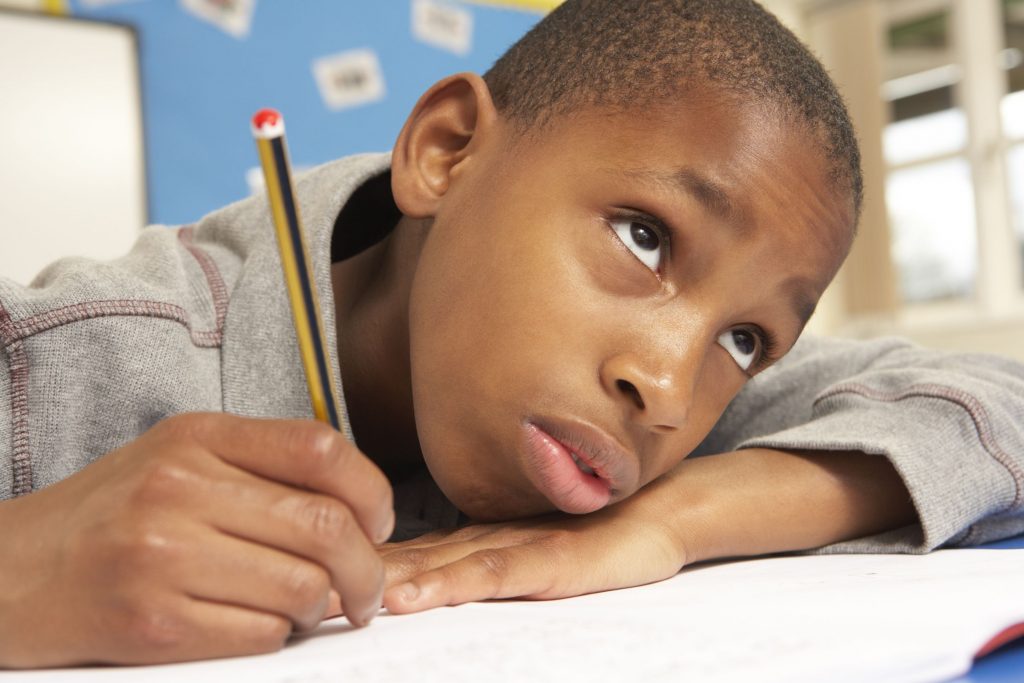
It can be argued that the form that discipline takes in US public schools derives, in part, from the form of discipline utilized in the broader criminal justice system. For instance, the war on drugs reached its height in the nineties with the passage of the 1994 Omnibus Crime Bill, which was signed into law the same year as the Gun-Free Schools Act, a law that requires students carrying a firearm to be suspended for one year. Following the passage of the Gun-Free Schools Act, schools all over the country ramped up their use of zero-tolerance policies – though these measures had been in use since the eighties.
Worse and Worse
Zero-tolerance policies then led to an increase in the use of surveillance cameras, security guards, metal detectors and punitive school discipline policies. These intensifications resulted in a massive increase in suspensions – from 1.7 million per year in 1974 to 3.7 million in 2010 – and the entrenchment of the school-to-prison pipeline.
And just like our criminal justice system, this disciplinary framework has disproportionately targeted people of color. According to Class Action: An Activist Teacher’s Handbook, one out of every four African-American public school students, in Illinois, was suspended at least once between 2009 and 2010. And in the Chicago Public School (CPS) system, in 2012, black students accounted for 75 percent of school based arrests, while only making up 42 percent of the CPS population. These numbers are even more striking when you consider the fact that suspended students are three times more likely to drop out before tenth grade than students who have not been suspended.
Examples of Punishment
In 2013, the ACLU released a listicle on Buzzfeed entitled “Eleven Students Whose Punishments We Wish Were Made Up.” The list was composed of horrendous (true) stories of the types of punishment used in a zero tolerance environment. The first on the list referred to the suspension of a five-year old girl for using a Hello Kitty bubble gun. In the eyes of school officials, this constituted a “terrorist threat.”
Another example involved “a 12-year-old student in Texas [who] was charged with a misdemeanor for spraying herself with perfume and ‘disrupting class.’” And in one of the most egregious cases, a 16-year old girl was arrested for dropping a cake. Additionally, school security ended up breaking her wrist during the “spilled cake” incident.
Measuring the Effects of Zero Tolerance Policies
It is becoming increasingly evident that zero tolerance policies are not effective, if effectiveness is measured by decreased recidivism. Following years of data collection and analysis, researchers have found that zero tolerance policies don’t reach their intended goal. In fact, these policies have led to a boost in dropout rates and repeat offenses, the exact opposite of the desired effect.
Recent Attempts to Address the Issue
In an attempt to curb the disproportionate targeting of African American kids by public schools, the Departments of Education and Justice sent a letter to schools in 2014 asking them to create safer environments without “relying heavily on suspensions and expulsions.” And if the schools failed to address discriminatory practices they could face a civil rights action.
It is a question whether DOE and DOJ officials understood the irony of their request. To deter punitive practices using threats is akin to fighting fire with fire. After all, following the request, many schools complained because they felt they had no other recourse for maintaining order.
Moreover, the letter still relied on the same disciplinary framework, calling for the promotion of “fair and effective disciplinary practices that will make schools safe,” and thus failed to think beyond the punitive paradigm.
In Class Action: An Activist Teacher’s Handbook, published in 2014, the authors proposed “building restorative and transformative justice into schools and communities.” Such a framework requires one to consider the whole context in which harm is inflicted and to “seek to transform or rebuild what was lost rather than view punishment as a final resolution.” This is but one alternative.
With Betsy DeVos at the helm of the Education Department, we probably won’t see such a paradigmatic shift any time soon, but it is nonetheless important to continue to imagine new possibilities.
